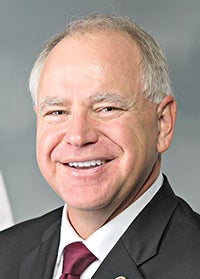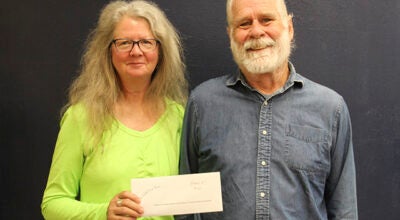Walz says Minnesota’s social distancing may be helping
Published 7:14 pm Tuesday, March 24, 2020
|
Getting your Trinity Audio player ready...
|
MINNEAPOLIS — Early indications are that Minnesotans are practicing social distancing well enough that they may be helping to slow the spread of COVID-19, Gov. Tim Walz said Tuesday as he staked out a position between a president who wants to restart the economy by Easter and other governors who’ve already ordered their residents to shelter in place for what could be weeks.

Tim Walz
Walz said on a conference call with reporters that he’s still waiting for more data on when the number of cases will peak in Minnesota and when intensive care beds will reach capacity. Experts at the University of Minnesota have been working to model those scenarios, and he said the work suggests that “there may be smarter and a more targeted way” to respond.
“But there is no doubt that this is going to take some time” for the virus to run its course and for the economy to recover, he said. “It’s going to be well beyond Easter, and I don’t think it does us any good to pretend that it’s not.”
The governor said he would hope that the president’s decisions are driven by Dr. Anthony Fauci, the nation’s top infectious disease expert, rather than his top economic adviser, Larry Kudlow as he balances health and economic concerns. He also said he hopes Trump uses his power under the Defense Production Act to crank out personal protective equipment and ventilators and ramp up testing.
“The federal government could really, really help us by using their power to ramp up production and let us do the social things in each area,” he said. “Some areas might need, like New York City, a full shelter in place, no exception. Others may not if we have the capacity to build the ICU beds and we have the ability to test and isolate.”
Walz said the evidence that Minnesotans are keeping their distance and pushing back the peak dates includes cellphone data and reduced traffic in both the Twin Cities area and rural Minnesota showing that people are staying home more and venturing out less He also cited “a natural inclination to follow the rules” by residents.
“We think Minnesota is getting results that look different,” Walz said. That buys the state time to prepare, he added. “The thing that we’re striving for is, is to not let anybody show up at the hospital who needs an ICU or a ventilator not be able to get one.”
For most people, the coronavirus causes only mild or moderate symptoms, such as fever and cough. For some, especially older adults and people with existing health problems, it can cause more severe illness, including pneumonia. The vast majority of people recover within weeks.
The Minnesota Department of Health said the state’s count of confirmed COVID-19 cases rose to 262 on Tuesday, an increase of 27 from Monday. Fifteen patients were hospitalized out of a total of 21 since the pandemic reached the state.. Seven patients were in intensive care, with 243 adult ICU beds available statewide. There have been no additional deaths since one reported last weekend. Officials have stressed that the real total of Minnesotans with the disease is much higher.
Meanwhile, legislators have been meeting remotely in working groups to prepare for possibly reconvening Thursday to pass legislation to bolster the state’s response, House Speaker Melissa Hortman said in a statement. That would require agreement by the top four House and Senate Democratic and Republican leaders.
“Whether we have a House floor session will depend on whether or not legislation is agreed to by all four caucuses and is ready to pass, and that the legislation provides Minnesotans with further relief than the Governor is able to deliver via executive order,” Hortman said.




